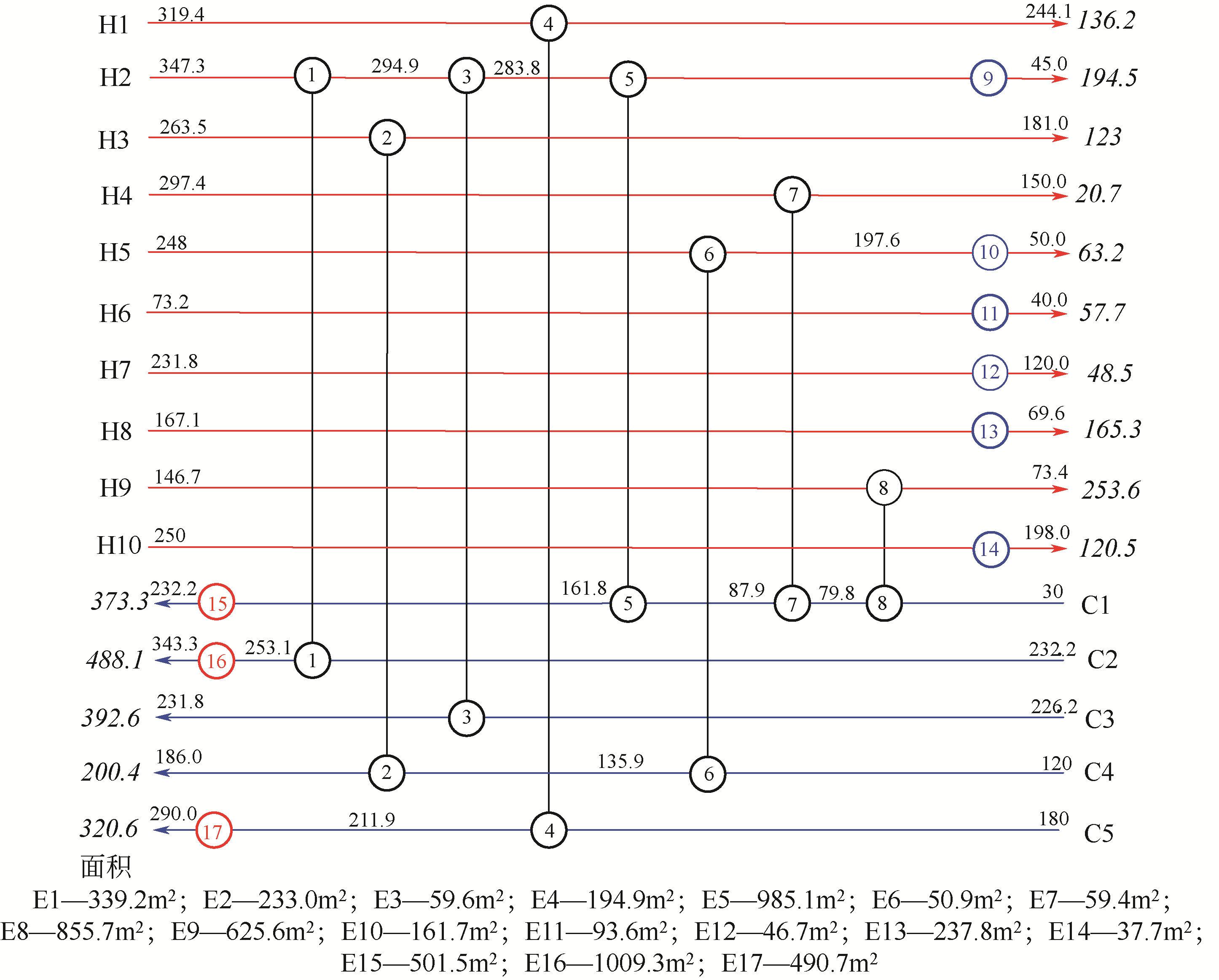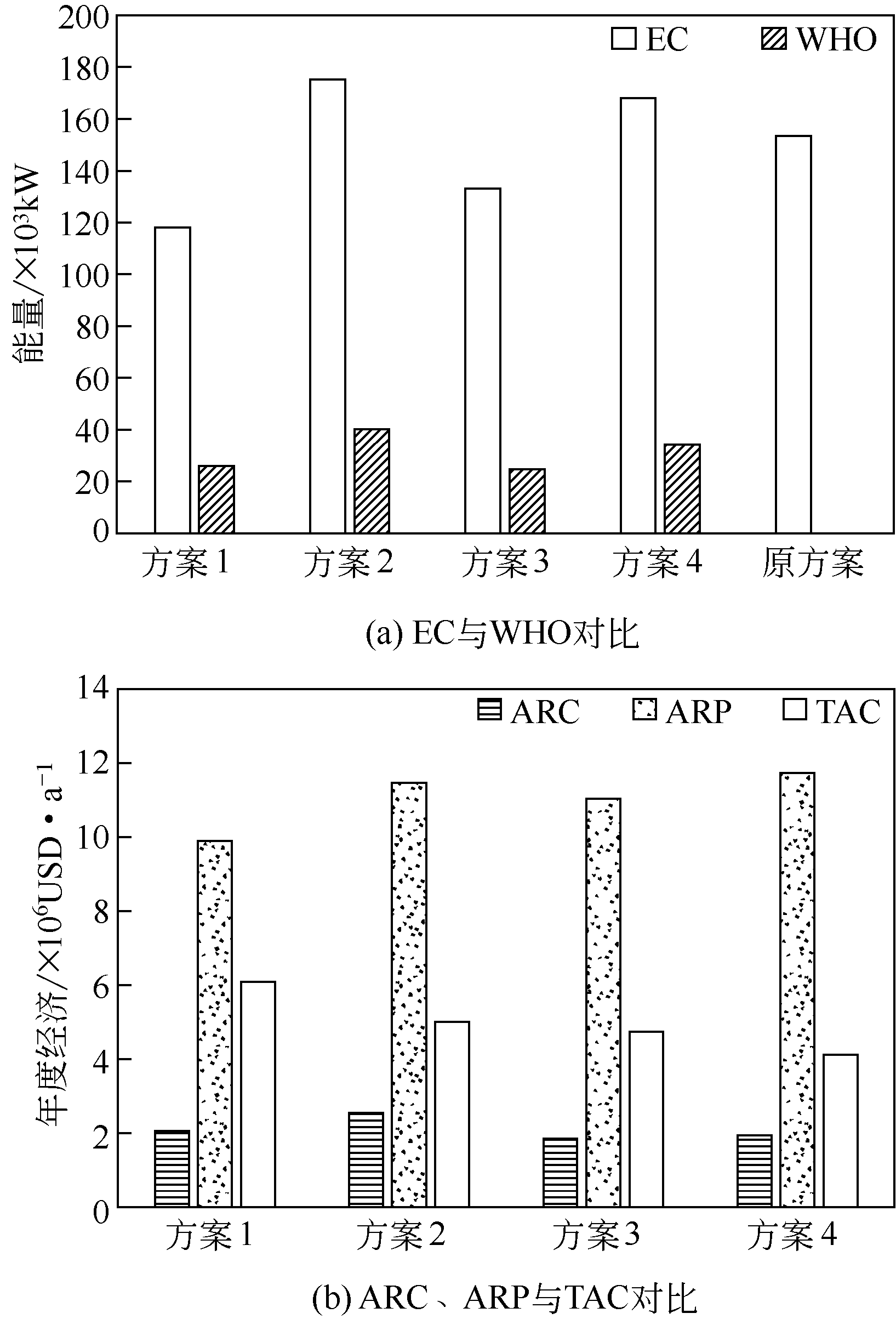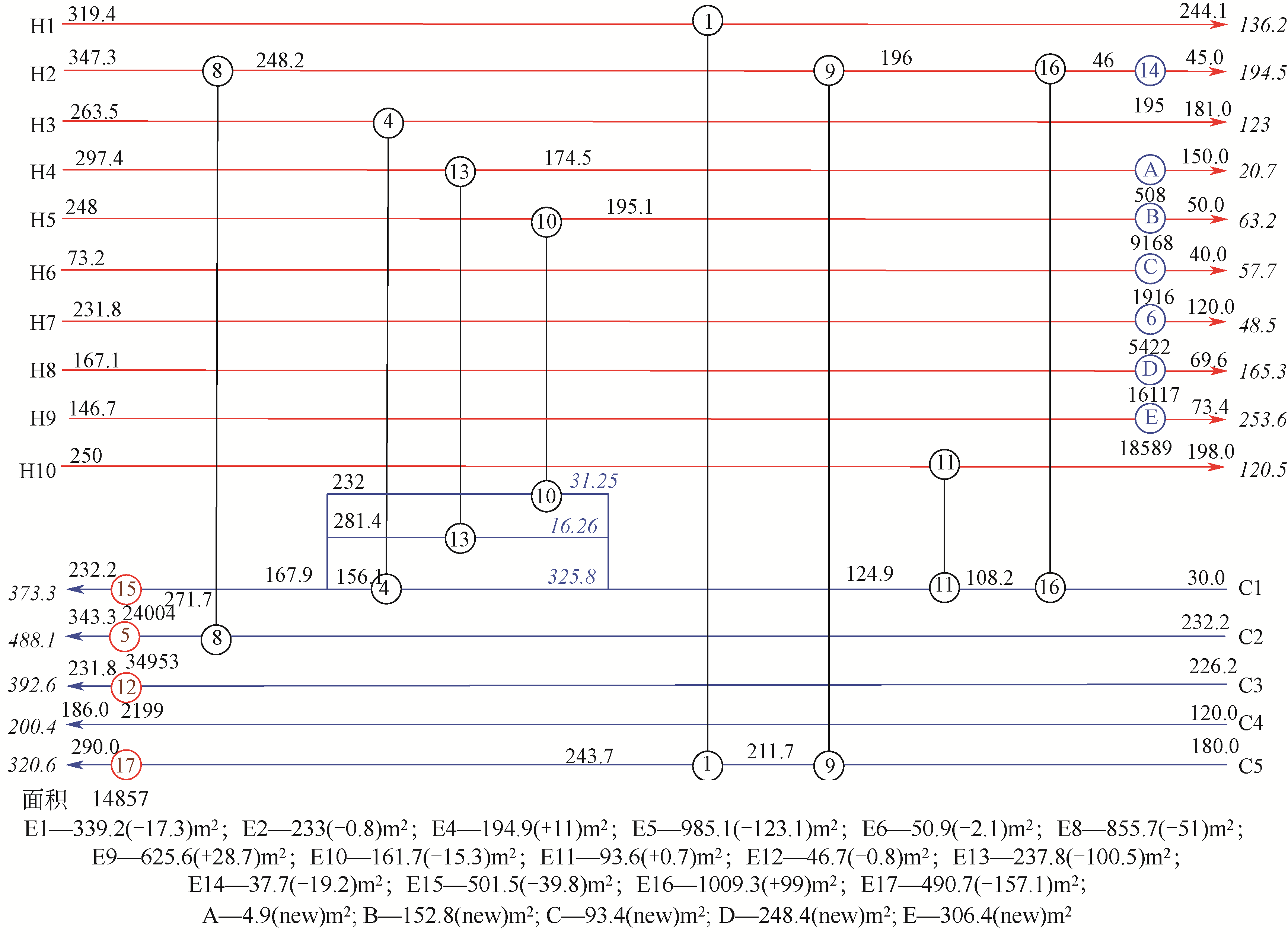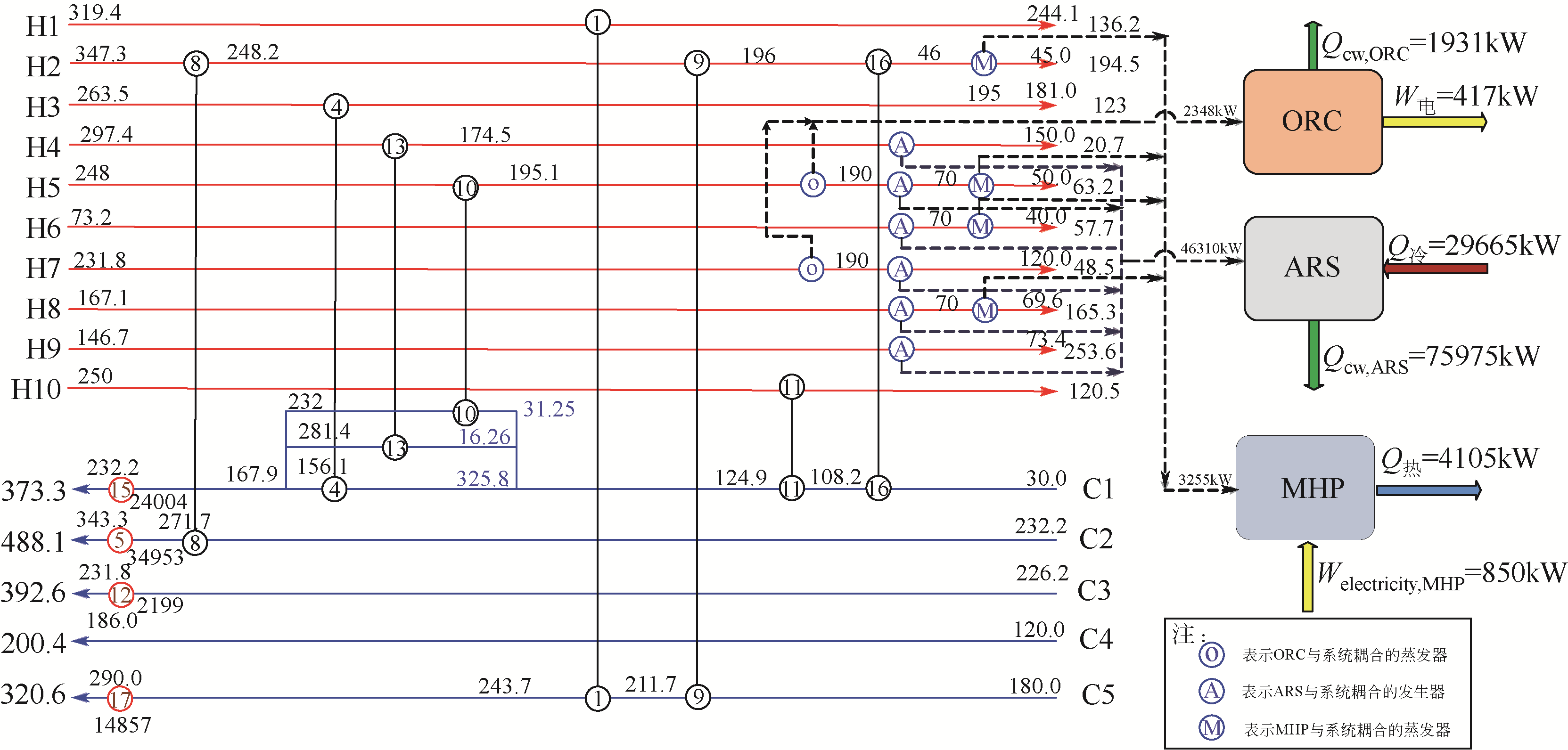| 1 |
俞杭生. 基于改进超结构的换热网络优化改造[D]. 杭州: 浙江工业大学, 2017.
|
|
YU Hangsheng. Heat exchanger networks retrofit based on modified superstructure[D]. Hangzhou: Zhejiang University of Technology, 2017.
|
| 2 |
谢小东, 范伟, 蒋宁, 等. 基于NSGA-Ⅲ算法的高维能量集成网络的优化改造[J]. 化工进展, 2020, 39(3): 872-881.
|
|
XIE Xiaodong, FAN Wei, JIANG Ning, et al. Retrofit of high-dimensional energy integrated network based on NSGA-Ⅲ algorithm[J]. Chemical Industry and Engineering Progress, 2020, 39(3): 872-881.
|
| 3 |
AJAH A N, PATIL A C, HERDER P M, et al. Integrated conceptual design of a robust and reliable waste-heat district heating system[J]. Applied Thermal Engineering, 2007, 27(7): 1158-1164.
|
| 4 |
I-L SVENSSON, JÖNSSON J, BERNTSSON T, et al. Excess heat from Kraft pulp mills: trade-offs between internal and external use in the case of Sweden ( ): methodology[J]. Energy Policy, 2008, 36(11): 4178-4185. ): methodology[J]. Energy Policy, 2008, 36(11): 4178-4185.
|
| 5 |
XIA Li, LIU Renmin, ZENG Yiting, et al. A review of low-temperature heat recovery technologies for industry processes[J]. Chinese Journal of Chemical Engineering, 2019, 27(10): 2227-2237.
|
| 6 |
TJOE T N, LINNHOFF B. Using pinch technology for process retrofit[J]. Chemical Engineering, 1986, 93(8): 47-60.
|
| 7 |
XIAO Yuan, SUN Tao, CUI Guomin. Enhancing strategy promoted by large step length for the structure optimization of heat exchanger networks[J]. Applied Thermal Engineering, 2020, 173: 115199.
|
| 8 |
CHEN Chengliang, LI Poyi, CHEN Huichu, et al. Synthesis of transcritical ORC-integrated heat exchanger networks for waste heat recovery[M]// Computer Aided Chemical Engineering. New York: Elsevier, 2015, 37: 1073-1078.
|
| 9 |
王弘历, 龚燕, 郭彦, 等. 炼化过程低温余热利用技术的应用及进展[J]. 石油规划设计, 2017(1): 14-17.
|
|
WANG Hongli, GONG Yan, GUO Yan, et al. Application and development of low-temperature heat utilization technologies applied in refining and petrochemical processes[J]. Petroleum Planning and Design, 2017(1): 14-17.
|
| 10 |
KÖSE Ö, KOÇ Y, YAĞLI H. Performance improvement of the bottoming steam Rankine cycle (SRC) and organic Rankine cycle (ORC) systems for a triple combined system using gas turbine (GT) as topping cycle[J]. Energy Conversion and Management, 2020, 211: 112745.
|
| 11 |
ABDELHAY A O, FATH H E S, NADA S A. Solar driven polygeneration system for power, desalination and cooling[J]. Energy, 2020, 198: 117341.
|
| 12 |
WANG Mengying, DENG Chun, WANG Yufei, et al. Exergoeconomic performance comparison, selection and integration of industrial heat pumps for low grade waste heat recovery[J]. Energy Conversion and Management, 2020, 207: 112532.
|
| 13 |
HUPPMANN G. Industrial waste heat recovery by use of organic Rankine cycles (ORC)[M]//Energy Conservation in Industry— Combustion, Heat Recovery and Rankine Cycle Machines. Dordrecht: Springer, 1983: 160-176.
|
| 14 |
HUNG T C, SHAI T Y, WANG Shoukong. A review of organic Rankine cycles (ORCs) for the recovery of low-grade waste heat[J]. Energy, 1997, 22(7): 661-667.
|
| 15 |
WEI Donghong, LU Xuesheng, LU Zhen, et al. Performance analysis and optimization of organic Rankine cycle (ORC) for waste heat recovery[J]. Energy Conversion and Management, 2007, 48(4): 1113-1119.
|
| 16 |
BULGAN A T. Use of low temperature energy sources in aqua-ammonia absorption refrigeration systems[J]. Energy Conversion and Management, 1997, 38(14): 1431-1438.
|
| 17 |
ABOU-ZIYAN H Z, AHMED M F, METWALLY M N, et al. Solar-assisted R22 and R134a heat pump systems for low-temperature applications[J]. Applied Thermal Engineering, 1997, 17(5): 455-469.
|
| 18 |
谭忠富, 谭清坤, 赵蕊. 多能互补系统关键技术综述[J]. 分布式能源, 2017(5): 4-13.
|
|
TAN Zhongfu, TAN Qingkun, ZHAO Rui. Review of technologies for multi energy complementary systems[J]. Distributed Energy, 2017(5): 4-13.
|
| 19 |
DARAEI M, AVELIN A, DOTZAUER E, et al. Evaluation of biofuel production integrated with existing CHP plants and the impacts on production planning of the system—A case study[J]. Applied Energy, 2019, 252: 113461.
|
| 20 |
SI Fanyuan, WANG Jinkuan, HAN Yinghua, et al. Cost-efficient multi-energy management with flexible complementarity strategy for energy internet[J]. Applied Energy, 2018, 231: 803-815.
|
| 21 |
YEE T F, GROSSMANN I E, KRAVANJA Z. Simultaneous optimization models for heat integration (I): area and energy targeting and modeling of multi-stream exchangers[J]. Computers & Chemical Engineering, 1990, 14(10): 1151-1164.
|
| 22 |
SANTOS L F, COSTA C B B, CABALLERO J A, et al. Synthesis and optimization of work and heat exchange networks using an MINLP model with a reduced number of decision variables[J]. Applied Energy, 2020, 262: 114441.
|
| 23 |
LAL N S, WALMSLEY T G, WALMSLEY M R W, et al. A novel heat exchanger network bridge retrofit method using the modified energy transfer diagram[J]. Energy, 2018, 155: 190-204.
|
| 24 |
HUANG Xiaojian, LU Pei, LUO Xianglong, et al. Synthesis and simultaneous MINLP optimization of heat exchanger network, steam Rankine cycle, and organic Rankine cycle[J]. Energy, 2020, 195: 116922.
|
| 25 |
OLULEYE G, JIANG Ning, SMITH R, et al. A novel screening framework for waste heat utilization technologies[J]. Energy, 2017, 125: 367-381.
|
| 26 |
YANG Sheng, DENG Chengwei, LIU Zhiqiang. Optimal design and analysis of a cascade LiBr/H2O absorption refrigeration/transcritical CO2 process for low-grade waste heat recovery[J]. Energy Conversion and Management, 2019, 192: 232-242.
|
| 27 |
WANG Mengying, DENG Chun, WANG Yufei, et al. Exergoeconomic performance comparison, selection and integration of industrial heat pumps for low grade waste heat recovery[J]. Energy Conversion and Management, 2020, 207: 112532.
|
| 28 |
DEB K, JAIN H. An evolutionary many-objective optimization algorithm using reference-point-based nondominated sorting approach (Ⅰ): solving problems with box constraints[J]. IEEE Transactions on Evolutionary Computation, 2013, 18(4): 577-601.
|
| 29 |
SREEPATHI B K, RANGAIAH G P. Heat exchanger network retrofitting: alternative solutions via multi-objective optimization for industrial implementation[M]//Chemical Process Retrofitting and Revamping: Techniques and Applications, USA: Wiley, 2016: 193-222.
|
| 30 |
ARVAY P, MULLER M R, RAMDEEN V, et al. Economic implementation of the organic Rankine cycle in industry[C]//ACEEE Summer Study on Energy Efficiency in Industry, 2011.
|
| 31 |
HAMMOND G P, NORMAN J B. Heat recovery opportunities in UK industry[J]. Applied Energy, 2014, 116: 387-397.
|
| 32 |
BRÜCKNER S, LIU S, MIRÓ L, et al. Industrial waste heat recovery technologies: an economic analysis of heat transformation technologies[J]. Applied Energy, 2015, 151: 157-167.
|
| 33 |
冯志兵, 金红光. 冷热电联产系统的评价准则[J]. 工程热物理学报, 2005, 26(5): 725-728.
|
|
FENG Zhibing, JIN Hongguang. Performance assessment of combined cooling, heating and power[J]. Journal of Engineering Thermophysics, 2005, 26(5): 725-728.
|
 ), Shichao ZHAO, Xiaodong XIE, Wei FAN, Xinjie XU, Yingjie XU
), Shichao ZHAO, Xiaodong XIE, Wei FAN, Xinjie XU, Yingjie XU






 ): methodology[J]. Energy Policy, 2008, 36(11): 4178-4185.
): methodology[J]. Energy Policy, 2008, 36(11): 4178-4185.